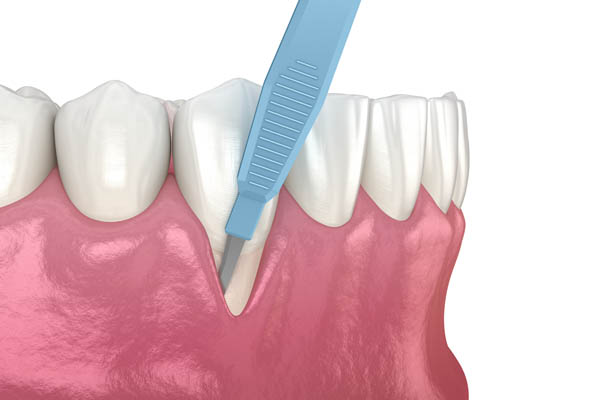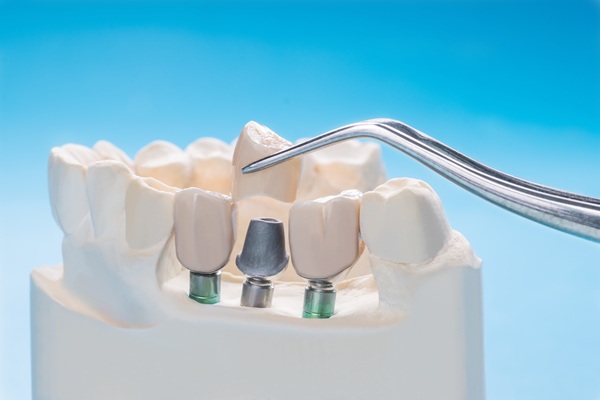How Do I Know if I Need Gum Grafting?

Gum grafting refers to procedures performed in order to replace missing soft tissues in the oral cavity. The soft tissues, also known as the gums, play a huge role in the function of the teeth. Without the gums, the teeth cannot properly perform. Additionally, the teeth become exposed when the gums are in bad shape.
Because of the big role that the gums play, it is essential that they are in good health at all times. However, poor oral hygiene and bad genetics often dictate otherwise. Continue reading to learn when to get gum grafting done.
When to get gum grafting
The following information highlights when to get a gum grafting procedure. Review this when trying to decide what type of dental attention to undergo.
Receded gums
Wondering if you need gum grafting? Individuals that have receded gums will need a grafting procedure in order to combat the problem and restore the lost tissue. When the gums are receded, they become at risk of developing infections or injuries. Additionally, the teeth become at risk because they are not as protected as they need to be in order to function healthily and normally.
A good way to tell if you need gum grafting is to compare photos from a few years apart. If the teeth appear longer in the most recent photo then it is likely that the gums are beginning to pull back, which means a graft is likely necessary.
Why do the gums recede?
The gums recede for a couple of reasons. The most common reason is periodontal disease, which is the most extreme level of an infection in the gums. When the gums become infected, usually a cleaning or oral rinse can address it. However, if the infection grows, spreads, and manifests beneath the soft tissues, the result can be longer teeth and shorter, thinner gums. The process of receding does take time; however, it is gradual, which means it may be difficult to detect at home.
Another reason that the gums recede is due to old age. A lot of individuals that reach the elderly stage will experience receding. Oftentimes, the cause is simply old age. However, there are other uncontrollable reasons, such as genetics. Unfortunately, some individuals are given gums that appear to be receded.
Regardless of why the gums recede, the result is typically grafting. Gum grafting will replace the soft tissues and restore the overall health of the oral cavity.
Other things to know
It is important to know that everyone's situation varies based on the individual. Some will require multiple rounds of gum grafting in order to achieve the desired results.
Find out more
Individuals who struggle with receded gums should consult with a dental professional to undergo a consultation. The consultation allows for an evaluation of the oral cavity to be done. The evaluation will highlight what areas require attention, such as the soft tissues. From there, the dental professional can determine what type of attention is needed. To learn more about gum grafting and when it is required, reach out today.
Request an appointment here: https://www.periocafe.com or call Brighton Periodontal & Implant Dental Group at (818) 703-7733 for an appointment in our Woodland Hills office.
Check out what others are saying about our services on Yelp: Read our Yelp reviews.
Recent Posts
Dental implants are the gold standard of dental replacements. Titanium rods and porcelain crowns are the most stable dental replacements you can get. Once osseointegration ends, you will have a strong, stunning smile again. Knowing the advantages of dental implants can motivate you to see your dentist about getting these restorations. Here are the three…
Implant supported dentures are a reliable and long-lasting solution for individuals who need to replace most or all of their teeth. Unlike traditional dentures that rest on top of the gums, implant supported dentures are anchored by dental implants that are surgically placed into the jawbone. This method offers increased stability, improved function, and a…
A prosthodontist is a type of dental specialist who can provide a range of treatments within a single smile makeover plan. Due to their advanced education and training, they are an ideal solution if you are looking for a professional who can reliably help you reach your cosmetic and oral health goals.A smile makeover involves…
Getting dental implants from a periodontist is one of the most common ways to undergo tooth replacement. While dentists and oral surgeons are great resources to utilize for the procedure, periodontists have also become a common option due to their focus on the health of the gums, which play a role in oral health. Continue…


